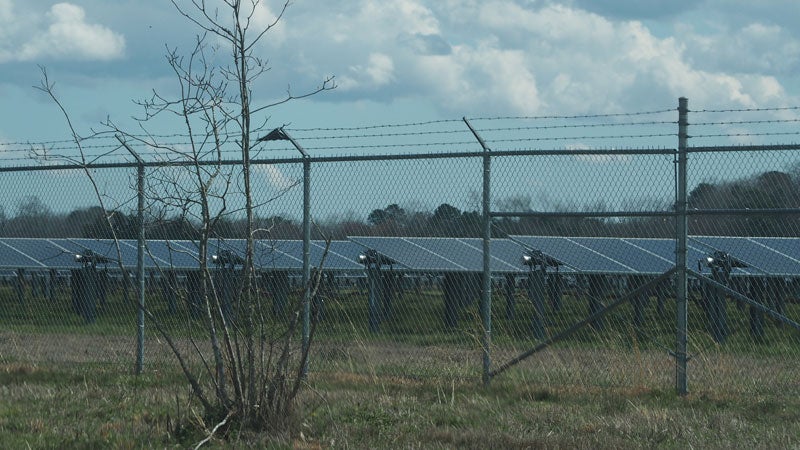Isle of Wight delays vote on near moratorium on solar farms
Published 5:06 pm Monday, April 24, 2023

- The Woodland facility in Isle of Wight County is presently the county's only operating solar farm. (March 2022 file photo)
Isle of Wight County supervisors have postponed voting on a proposed ordinance that would impose a near moratorium on solar farms.
The proposal, which drew a mix of support and opposition at an April 20 public hearing, would limit the cumulative acreage of existing and proposed solar farms to 2% of the county’s “prime” farm soils, or a maximum of 2,446 acres.
The hearing drew 12 speakers, seven in support and five opposed.
Debbie Arrington is among the supporters of the proposed cap. At the hearing, she said she received unsolicited mail from a solar developer in response to comments she’d made in January opposing the then-proposed 637-acre Carver Solar farm, and would like to see the ordinance go even further by restricting developers’ ability to contact homeowners.
“I want to see the horses in the field, the cows in the field … not a solar farm,” Arrington said.
Paul Garris, also of Zuni, asked that the ordinance count the entire acreage of any parcel with a solar farm, and not just the fenced project area, toward the 2% cap. As written, the draft ordinance would apply the 2% cap only to the fenced areas.
Among the ordinance’s opponents was Blake Cox of Chesterfield County, co-founder of the advocacy organization Energy Right, who argued the 2% cap “limits the rights of landowners.”
“Private property rights should be at the forefront of this discussion,” Cox said.
Energy Right describes its mission as ensuring “energy is developed the right way with a focus on property rights and conservative ideals.”
Greg Creswell, senior development manager of Arlington-based solar developer AES, also opposes the cap. The company is developing the 730-acre, 85-megawatt Windsor PV-1 solar farm in Isle of Wight and the 1,750-acre, 240-megawatt Cavalier solar farm that will span the Isle of Wight-Surry County border.
The company also recently purchased $12.1 million in additional Isle of Wight acreage for a third project. The taxes from the three combined could make AES “among the highest taxpayers” in the county. But the cap would “severely diminish” this impact.
According to county data and the 2017 U.S. Census of Agriculture, 1,759 acres, or 72% of the maximum, is already taken up by six approved solar farms, though only one is operational.
According to Isle of Wight Community Development Director Amy Ring, the 2% cap would not apply to any project that submits a conditional use permit application prior to the adoption of the ordinance. Any project submitted prior to the date of adoption would effectively be grandfathered under the county’s existing requirements for solar farms.
Though the supervisors’ motion to table the vote passed unanimously, Supervisor Dick Grice urged his fellow supervisors to act “as quickly as possible,” stating he believed the cap is “absolutely needed.”





